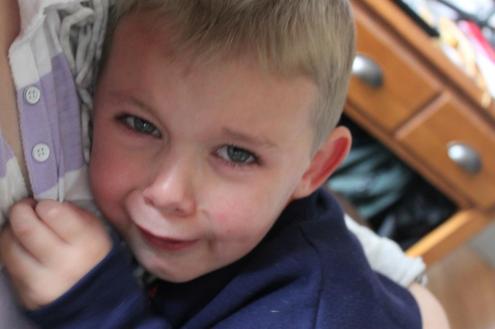Understanding Resiliency in Kids
We are changed by that which we cannot change. ~Dr. Gordon Neufeld

Last week I had the opportunity to sit on a panel of counselors and parent educators as a part of our school district’s Parent Education Night. The topic of the evening was “Cultivating Resilience in our Children.” Those of us on the panel each gave a short presentation on our perspective on resilience; my presentation focused on how kids develop resilience and what parents can do at home to help them develop it. Here is information from the handout I shared with parents:
Resilience =The ability to handle things going wrong
The ability to cope with adversity
The ability to find creative solutions to problems
The ability to bounce back from emotional hurts
Some of the most common challenges that children encounter bring up unavoidable feelings of frustration, anger, sadness, or fear. These are futile situations; children are powerless to change them. It is in these situations that we, parents, tend to want to protect our kids. We are inclined to offer rationalization, justification, and protection from life’s futilities. Common futilities in a child’s life are ones such as:
- Trying to make something work that doesn’t
- Not feeling smart enough
- Not being perfect
- Failing
- Wanting to hold on to a good experience
- Not being able to have mom or dad all to oneself
- Wishing to go back in time (wanting to change something they’ve done)
- Trying to defy the laws of nature (make magic work)
- Losing at games or contests
- Wanting to “send back” a sibling
- Not being able to know what will happen in the future
- Not being big enough/ tall enough/ strong enough for their own satisfaction
- Being excluded (among peers or siblings)
- Not being able to control another’s decisions/ choices/ outcomes
- Not being able to have their own way all the time
1. Allow kids get to the point of futility. They must experience adversity, frustration, and mistakes (see list above).
2. Kids will express their feelings through tears. Tears are a healthy and necessary step to move towards resiliency.
3. Parents must acknowledge and accept those feelings. Provide a safe environment for kids to express their feelings by allowing tears, empathizing, and supporting them through their difficult emotions.
4. Parents offer encouragement. Help kids through their hardships; help them find success after failure.
Here are some things you can do at home to create a safe, supportive environment and encourage a child’s development of resiliency:
- Have one-on-one time each day (with a young child), or each week (with an older one). Allow the child to decide the activity, and to take the lead in the topics of conversation. Your focus is on listening and getting to know your child just a little bit better.
- Substitute punishment and consequences with problem solving. The unpleasantness of a punishment may work in the short-term, but it is much more effective to teach kids how to own their mistakes and fix them. Instead of approaching misbehavior with the thought of, “What can I do to you so that you’ll learn a lesson?” approach it with the perspective of, “How can we solve this problem?”
- Tell kids, “It’s OK to cry.” Don’t rescue them from their feelings, but acknowledge all feelings as real and acceptable. They more they are allowed to feel their feelings when they are young, the more capable they will be of understanding and managing them when they are grown.
- Switch from time-outs to time-ins. A time-out is sending a child away to an isolated area to deal with his feelings alone. A time-in is a connective moment spent with a child to help him calm down and learn how to regulate his emotions. Help a child feel better so he can do better.
- Provide opportunities for autonomy and responsibility. Give kids control over as many areas of their lives as possible. From choosing their own clothes to fixing their own food to deciding how to spend their allowance…let them make their own choices—and their own mistakes. Recovering from mistakes is where resilience comes from, but they need to have those opportunities in the first place.
- Offer encouragement through failures and mistakes…
“I trust you.”
“You have my support.”
“These are some really big feelings.”
“You are capable of finding a solution.”
“I have faith that you’ll figure this out.”
“What can I do to help you right now?”
“What are your ideas?”
“Is there a solution that will meet everyone’s needs?”
“Trust yourself.”
“I’m confident we can find a workable solution.”
“You have the freedom to choose.”
“I love you.”
No comments:
Post a Comment